China Daily | Updated: 2023-05-20 09:40
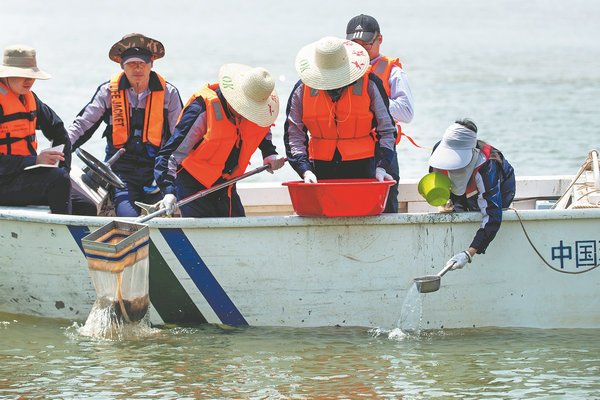
Researchers collect samples
along the Yangtze River section in Chibi, Hubei province, to conduct biological
assessment of the water quality and monitor aquatic life. [Photo/Xinhua]
In a research vessel laboratory, scientists are busy analyzing
samples taken from the Yangtze River.
They are conducting the second annual spring health assessment
program of China's longest waterway, organized by the Ministry of Ecology and
Environment, which started in April.
Within two months, seven groups of researchers and scientists
were allocated to take and analyze samples from 331 designated sites of the
river's primary course, its major tributaries and lakes linked to the river to
quantitatively describe the Yangtze's ecology and biotic condition.
As of May 9, 199 designated sites had finished sample
collection, about 83 percent of the total sites, according to Hu Sheng, from
the research team.
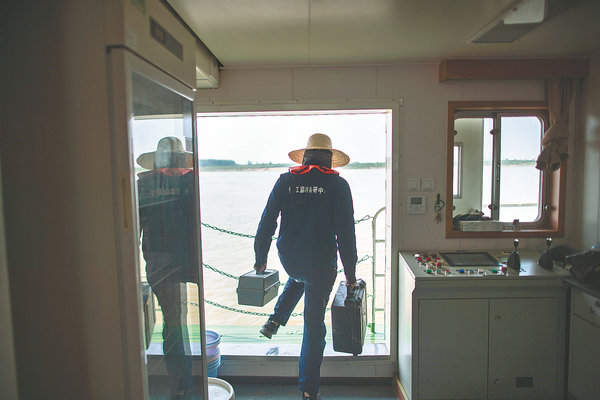
Xiong Shaokai prepares to
board another boat to a sampling site. [Photo/Xinhua]
"Compared to last year's work, algae are included as
bioindicators for organic pollution," Hu says, adding that periphytic algae
are investigated in rivers and streams, while planktonic algae are collected in
lakes.
Besides algae, chemical and physical parameters are also
measured. With these results, scientists can conduct "a comprehensive
physical examination" on the river, according to Zhang Jing, who is in
charge of the sample collection team.
Examining benthic invertebrates (backboneless species that
inhabit the bottom of bodies of water) needs the use of silt samplers, because
rapid water flow washes sediment away.
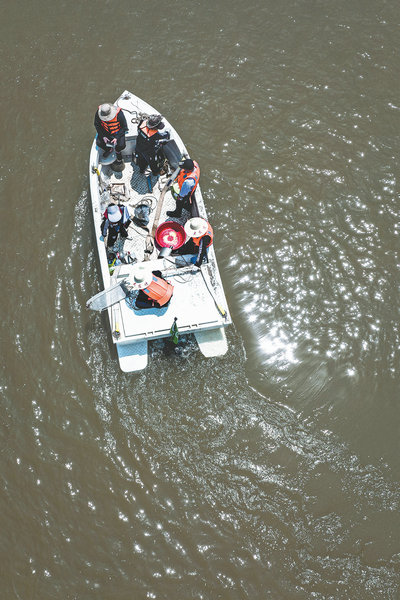
A research boat with
monitoring devices. [Photo/Xinhua]
After obtaining the samples, researchers separate aquatic life,
such as algae and benthic invertebrates, from water or mud. For 25-year-old
Xiong Shaokai, it is a task that needs patience and care.
"Inside a mud sample, there is a microworld and benthic
invertebrate communities are an important indicator in water health
assessment," Xiong says.
The benthic invertebrate community is sensitive to disturbance
and is a valuable indicator of the overall health of estuarine ecosystems.
Stretching more than 6,300 kilometers, the Yangtze is a deeply
significant waterway in the history, culture and development of the Chinese
nation and the central government has intensified efforts to protect the river
environment.
Adopted in late 2020, the Yangtze River Protection Law went into
effect in March 2021.
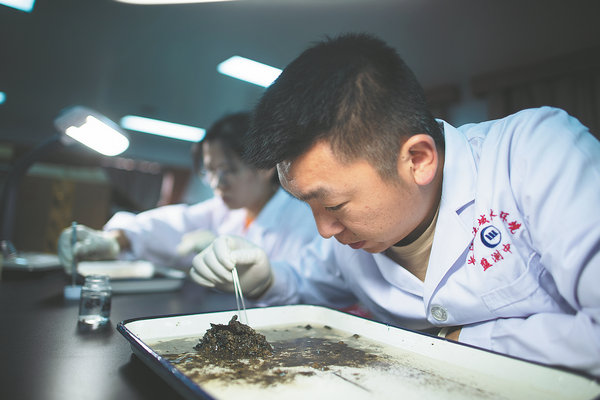
Researchers separate and
analyze aquatic life-forms from a river sample. They provide a clear indication
of the biological health of the river and its environs. [Photo/Xinhua]
Measures were also rolled out to ramp up the treatment of
wastewater in industrial parks along the river, as well as to enhance the
management of tailings ponds (mixtures of water, sand, clay and residual
bitumen left over from the process of separating oil from sand and clay) in
mines and the phosphorus sector. To preserve Yangtze biodiversity, China
started a 10-year fishing moratorium along the river, protecting more than
4,300 types of aquatic life.
According to the latest statistics from the Ministry of Ecology
and Environment, the water quality of the river's primary course has remained
Grade II since 2020.
Under the country's six-tier quality system for surface water,
Grade III and above is classified as "fairly good".
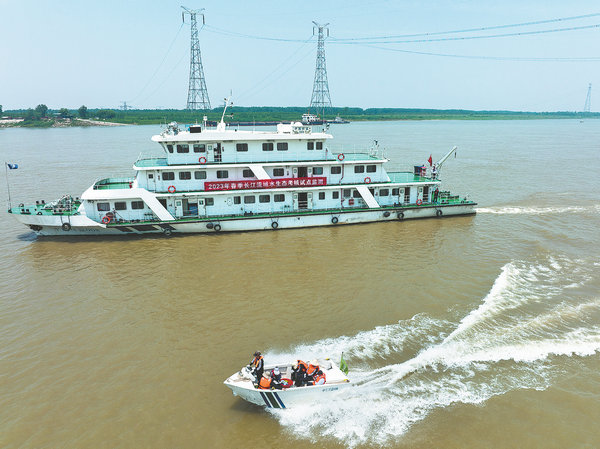
A speedboat takes researchers to a designated sample
site. [Photo/Xinhua]
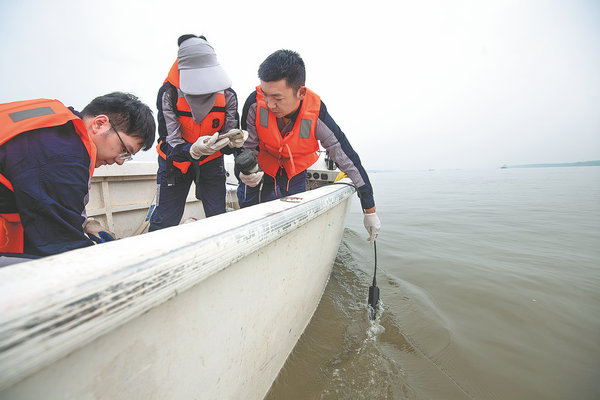
Monitoring water quality and the speed of the river flow in Wuhan,
Hubei province. [Photo/Xinhua]
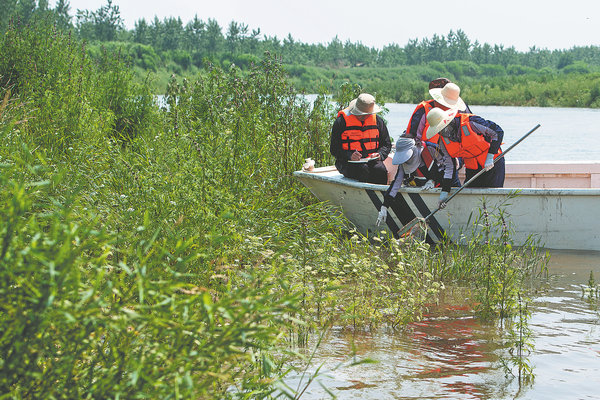
Along the banks of the river's section in Chibi, researchers scoop
up samples of benthic invertebrates. [Photo/Xinhua]

